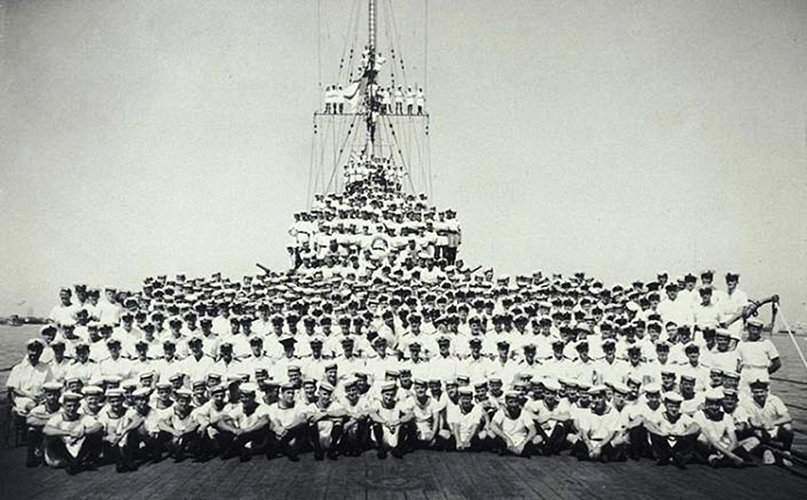On this day: HMAS Sydney (II) mystery solved

ON 16 MARCH 2008, 200km off the coast of Shark Bay in Western Australia, an international team of experts waited impatiently as a side-scan sonar searched for wreckage on the ocean floor at a depth of 2500m.
The purpose of the expedition? To find HMAS Sydney (II), the pride of the Royal Australian Navy, that disappeared with her entire crew off the western coast of Australia in 1941.
For 66 years, the location of Sydney remained shrouded in mystery, with the relatives and descendants of those who had perished left wondering. There were many theories about its location, but no analysis concrete enough to justify a search party.
When professional shipwreck hunter, David Mearns, joined forces with the Finding Sydney Foundation in 2008, the federal government finally agreed to fund an expedition. David had recently found the wrecks of Hood and Bismarck in very deep water, proving the success of his methodology.
At 10am on the 16 March, David noticed a small dark shape on the starboard side of the sonar display. Within minutes, he was able to confirm what he had at first suspected. The final resting place of HMAS Sydney had been found.
VIDEO: A brief history lesson of the on the HMAS Sydney. (Source: Electric Pictures/YouTube)
So what happened?
In November 1941, HMAS Sydney, along with her crew of 645 officers and men, disappeared somewhere off the coast of Western Australia, without a trace.
It all started on 19 November, when Sydney crossed paths with HSK Kormoran, a German raider. At 6pm a battle ensued and both ships were critically damaged.
The events of the battle were later inferred using German testimony and evidence from the shipwrecks.
Wes Olson, author of the book HMAS Sydney (II): In Peace and War, said Sydney was probably overwhelmed by Kormoran within minutes. It was hit over 100 times by shellfire.
“The Australian cruiser, ablaze and still under shellfire, turned behind Kormoran and limped away to die,” said Wes.

The whole HMAS Sydney (II) crew of 645 young men was lost. (Credit:Western Australian Museum)
An hour or so after midnight, despite having only been hit two or three times, Kormoran met the same fate, having received a critical hit to the engine room.
The only survivors were 318 German sailors, who were captured and interrogated by Australian forces. Their testimonies were predictably varied and many of the interrogators believed the Germans were lying. With no other witnesses, the investigation hit a dead end.
It would take 66 years for the first deep water search to begin.
“A needle in a thousand haystacks”
There were lots of people over the years that had ideas about where the shipwrecks were located. Most notably, a team of cognitive psychologists used the German accounts to predict Kormoran would be 2.7 nautical miles from where David later found it.
“The psychological basis for their methodology is valid only in their minds,” said David on the matter. “I used a completely different methodology to actually locate the wrecks. It’s an expertise that has been developed and is still being used today. This sort of revisionist history where people say, ‘I was closest, he was furthest’ is all a bit ridiculous”.
Part of David’s methodology depended on the analysis of a life-raft from Kormoran that was full of Germans when it was captured at sea. Using Australian meteorologists and oceanographers to analyse wind and surface currents, David retraced the drift of the life-raft. His methodology allowed him to narrow the scope of the search down to a span of ocean 6000sq.km.
“To find the Sydney was not like finding a needle in a haystack, it was like finding a needle in a thousand haystacks,” said David.
On 12 March 2008, just 64 hours after the search party began, Kormoran was found. Now they could use the German wreck as a reference point to find Sydney. Suddenly, the search box became a lot smaller.
“Everything was very, very tense on the ship and there was a great release of emotion by a lot of people when Kormoran was found,” said David.
Within 67 hours of Kormoran discovery, the Sydney was found.
“The speed at which we did it and the precision with which we did it, when you compare that to the decades of uncertainty…it just blew everybody away,” he said.
“I think that’s one of the reasons why today, looking back, it’s such an amazing achievement.”
READ MORE:
- Historic shipwrecks around Australia
- On this day: The Royal Australian Navy is born
- On this day: The SS Yongala sinks

